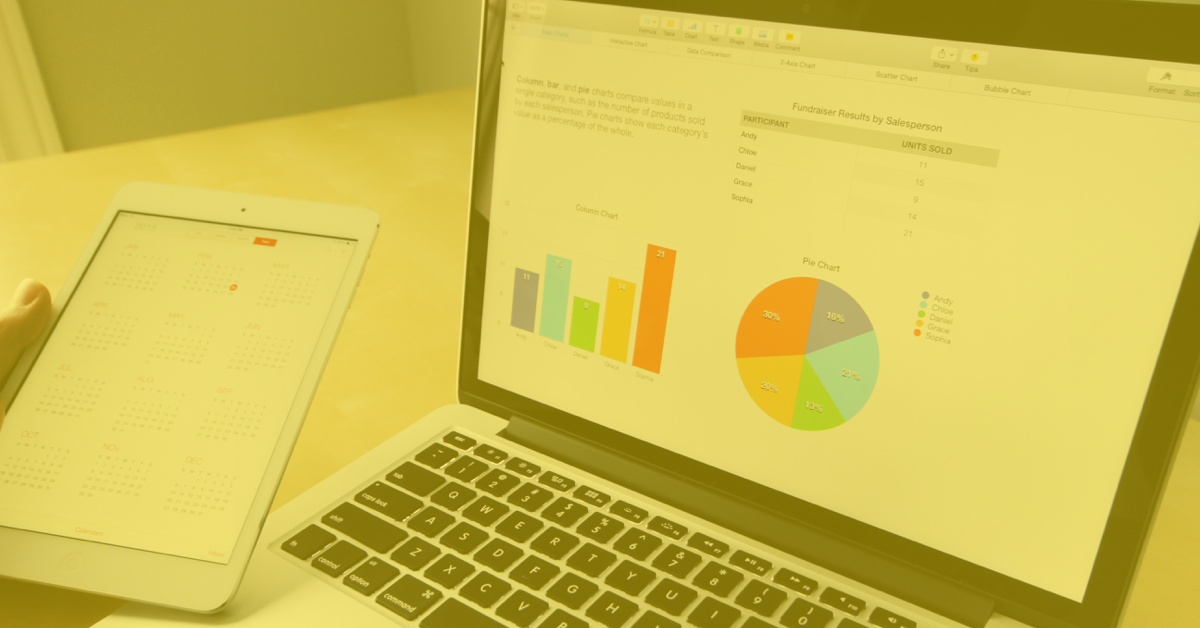Distilling Data
In the 1992 film Sneakers, Cosmo (played by Ben Kingsly) uttered, “The world isn’t run by money anymore. It’s run by little ones and zeroes, little...

To borrow a quote from essayist Michael Ventura, “without context, a piece of information is just a dot.” It isn’t until we connect the dots with additional context that information becomes valuable. For many brokers, their information rests locked away on servers without an efficient means to apply context and bringing value to data remains a laborious undertaking.
Brokers have had to adapt to new types of data and data collection methods. The best organizations have learned how to quickly take fragmented data and add context themselves; however, most companies lack the necessary resources to take on the complex challenge of extracting, analyzing, and presenting data in a meaningful way.
It has only been recently that the insurance industry, one that traditionally trails behind other comparable sectors, is gaining access to technological solutions able to unleash the power hidden within the heaps of information.

The sheer amount of information created, collected, and stored by brokers is mind-boggling. Today’s systems and applications are already stressed under the weight of managing the immense amount of data brokers must maintain. The volume of information is only going to grow as data becomes ever more granular in the endless pursuit of uncovering additional underwriting profit.
Brokers are now recognizing many of the technologies they currently deploy are quickly becoming outdated. Systems originally installed with the promise of increased efficiency and profits are now hampering the ability to leverage underwriting data for advanced analytics and insights, which could accelerate the procurement of insurance.
At one time, to be a digital broker merely meant bringing operations from the analog world online. While transferring paper files into their PDF or database equivalents was a start, hardly much else has changed in terms of how data is aggregated and consumed. The result is a vast amount of information sinking deeper into systems where its usefulness slowly erodes.
Extracting data and making it useful is further complicated by the variety of different data management systems used across the industry. Not all systems can communicate with one another and those that can are limited in their functionality. Brokers who recognize how their current systems are hindering their ability to grow and adopt innovation as a function of their operation will be well-positioned to take advantage of the next evolution in the insurance industry.

Interoperability is the ability of computer systems to readily communicate with one another irrespective of their developer. This concept isn’t anything new, but the insurance industry lags significantly behind others in embracing its importance.
As smart devices talk to one another regardless of their manufacturer and apps seamlessly share data amongst one another on our cell phones, the insurance industry remains heavily reliant on antiquated methods of data sharing. Document scanning, emails, and manual data entry continue to be the standard methods providing the necessary data to underwrite and bind an account.
There are opportunities buried within the troves of data brokers maintain.
Today’s existing standalone systems effectively prohibit the ability to bring context to the data contained within them. Uncovering those opportunities is a cumbersome and arduous pursuit, only available to those who have enough understanding or assets required to extract and examine information to make it useful. So long as resources continue to be allocated to supporting the current way of data management, unearthing those opportunities will never come to pass.
This is why interoperability is the key to unlocking broker growth. The ability to seamlessly connect systems with one another will enable brokers to shift their resources from data management to pursuing the opportunities their data presents them. In other words, data becomes a source of new business instead of a by-product of it.

If interoperability provides brokers an efficient mechanism to identify opportunities, optionality provides security against unforeseen obstacles to growth. The future of connectivity sets the stage for optionality. A future where brokers have the context to make the right decisions faster, leading to improved bottom lines.
At its most rudimentary level, optionality means to have many options. The concept, advanced by statistician Nassim Taleb in his book Antifragile, assumes we live in an uncertain world and optionality is the only way to outperform the average. The insurance industry is increasingly difficult to predict, and having optionality allows brokers to thrive despite not knowing what the future holds.
Because brokers are overflowing with data, technology capable of extracting and bringing context to data has the potential to present an endless flow of options, which may include new opportunities in previously unknown niches, ways to optimize existing insurance programs, better methods of servicing existing accounts, and others not yet imagined. Just one, game-changing option mined from a mountain of data could forever impact the trajectory of an organization.
.jpg?width=800&name=markus-winkler-IrRbSND5EUc-unsplash%20(1).jpg)
Data alone carries no value. It is only when the context is added that data becomes useful. Herein lies the challenge for brokers: how to transform data into malleable and valuable information upon which they are able to seize opportunities and make decisions, resulting in profitability.
The solution is multi-faceted and brings together interoperability and optionality to an organization’s systems. However, before a broker invests the time and resources necessary to transform how their data is utilized, they must establish a culture of innovation and data ownership. Without an entire company’s buy-in, data will remain in a stagnant state.
Introducing technology, even seemingly harmless updates, can upset personnel who remain fixated on traditional methods of operating. Therefore, before any real transformation can begin, a broker and their associates must first embrace innovation as the next step in an organization’s journey into the future.
As technology companies set their sights on the insurance industry, solutions to bringing context to data is becoming a reality. Open-data structures, standardization across platforms, and APIs are revealing the opportunities hidden within the servers of brokers nationwide. Brokers who are partnering with insurtech companies today to uncover the context of their data will be the same brokers who will lead the insurance industry of tomorrow.

In the 1992 film Sneakers, Cosmo (played by Ben Kingsly) uttered, “The world isn’t run by money anymore. It’s run by little ones and zeroes, little...

In the heart of Atlanta, a prominent insurance broker found themselves slipping among their competition. The company had grown into a formidable...

“The best way to predict the future is to create it.” – Peter Drucker